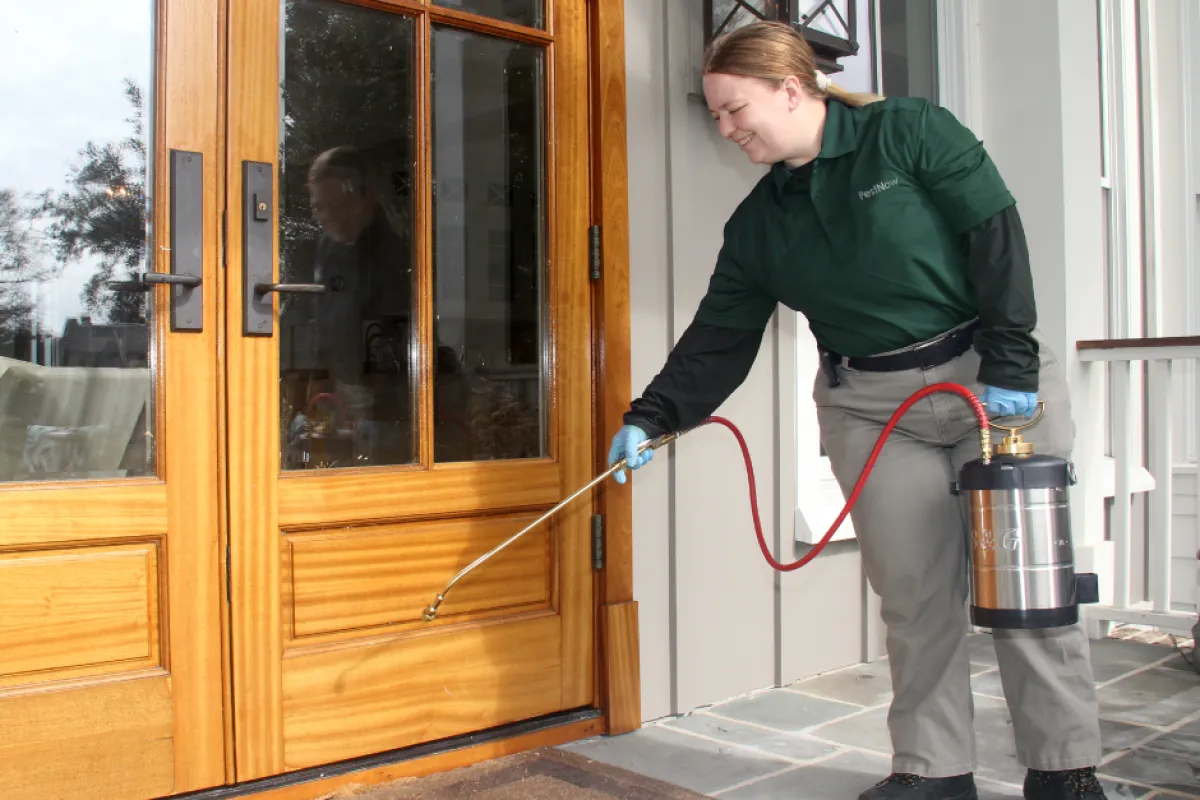A1 Bed Bug Exterminator Charlotte - Specialized Bed Bug Elimination
A1 Bed Bug Exterminator Charlotte - Specialized Bed Bug Elimination
Blog Article
Bed Pest Therapy Breakdown: Contrasting Chemical Vs. Non-Chemical Solutions
In the realm of pest control, specifically when dealing with the consistent concern of bed pests, the choice between chemical and non-chemical treatment options can be a pivotal one. Both methods use distinctive benefits and drawbacks, influencing elements such as efficiency, safety and security considerations, and overall expense. By examining the nuanced details of each technique, a more clear understanding of which course to pursue in attending to a bed bug infestation can be achieved.
Efficiency of Chemical Therapies
Chemical treatments for bed insect invasions have been extensively acknowledged for their rapid and powerful efficiency in getting rid of these bugs. When taking into consideration the performance of chemical therapies, it is vital to comprehend that they can offer a extensive and quick option to a bed insect issue.
Additionally, chemical therapies have the benefit of using residual effects, indicating that they can remain to get rid of bed insects also after the first application. This recurring action is specifically advantageous in combating any kind of possible re-infestations. Additionally, the fast activity of chemical treatments can bring relief to people dealing with serious bed bug infestations, enabling them to gain back control of their living rooms quickly.
Safety And Security Problems With Chemical Solutions
One essential element that needs cautious consideration when making use of chemical remedies for bed pest therapy is guaranteeing the security of occupants and the atmosphere. Direct exposure to specific chemicals used in bed insect therapies can lead to breathing problems, skin irritation, or various other negative reactions, specifically in individuals with pre-existing problems or sensitivities.
Additionally, the environmental effect of chemical remedies is another substantial consideration. Some chemicals used in bed bug treatments might be hazardous to beneficial pests, wild animals, and environments if they seep into the soil or water systems. It is necessary to make use of chemical treatments deliberately, following security standards, and thinking about much less poisonous choices to reduce these threats and make sure the safe and reliable management of bed insect problems.
Advantages of Non-Chemical Techniques
Thinking about the prospective security issues and ecological influence connected with chemical options for bed insect therapy, exploring non-chemical approaches offers an appealing option with a number of unique advantages. Non-chemical approaches offer a safer alternative for households, specifically those with people, youngsters, or animals delicate to extreme chemicals. These strategies eliminate the risks of direct exposure to poisonous materials, lowering the possibility for adverse health and wellness impacts. Moreover, non-chemical therapies are eco-friendly, as they do not contribute to air or water air pollution, making them a sustainable selection for pest control.
Furthermore, non-chemical solutions can be efficient in targeting bed bugs, consisting of hard-to-reach locations where chemical treatments may not pass through - A1 pest control services charlotte. Approaches such as warmth treatment, vacuuming, steam cleansing, and cushion coverings offer see comprehensive removal without the usage of unsafe chemicals.
Limitations of Non-Chemical Treatments

Additionally, non-chemical therapies typically call for numerous applications to achieve effective elimination. This can be taxing and may not constantly guarantee full removal of all bed pests and their eggs, especially in surprise or hard-to-reach locations.
Moreover, the success of non-chemical therapies greatly counts on appropriate implementation and thoroughness, which can be testing for people without expert experience. Poor application of non-chemical methods may cause incomplete removal, bring about relentless infestations and the need for additional treatments.
As a result, while non-chemical therapies have their benefits, it is vital to recognize these limitations and consider them when figuring out the most efficient technique for handling bed insect problems.
Price Comparison: Chemical Vs. Non-Chemical Options
Provided the restrictions linked with non-chemical therapies, a vital aspect to examine in the context of bed insect management is the cost contrast between chemical and non-chemical choices. In contrast, non-chemical therapies like heat therapy or heavy steam can be extra costly, with costs varying from $1,000 to $6,000 for an entire home. While the preliminary expense of chemical treatments may seem reduced, several treatments might be called for to completely eradicate the invasion, potentially increasing the total cost.
Final Thought

Considering the possible safety problems and environmental impact linked with chemical remedies for bed insect treatment, exploring non-chemical approaches offers a promising alternative with several unique advantages.Offered the restrictions associated with non-chemical therapies, a vital facet to evaluate in go to these guys the context of bed pest administration is the expense comparison in between chemical and non-chemical choices. In comparison, non-chemical treatments like heat therapy or heavy steam can be a lot more expensive, with expenses varying from $1,000 to $6,000 for a whole home. While the initial cost of chemical therapies may seem lower, multiple treatments may be required to fully eliminate the infestation, potentially increasing the overall cost.In final thought, when comparing chemical and non-chemical bed insect therapy options, it is crucial to consider performance, safety, advantages, limitations, and cost.
Report this page